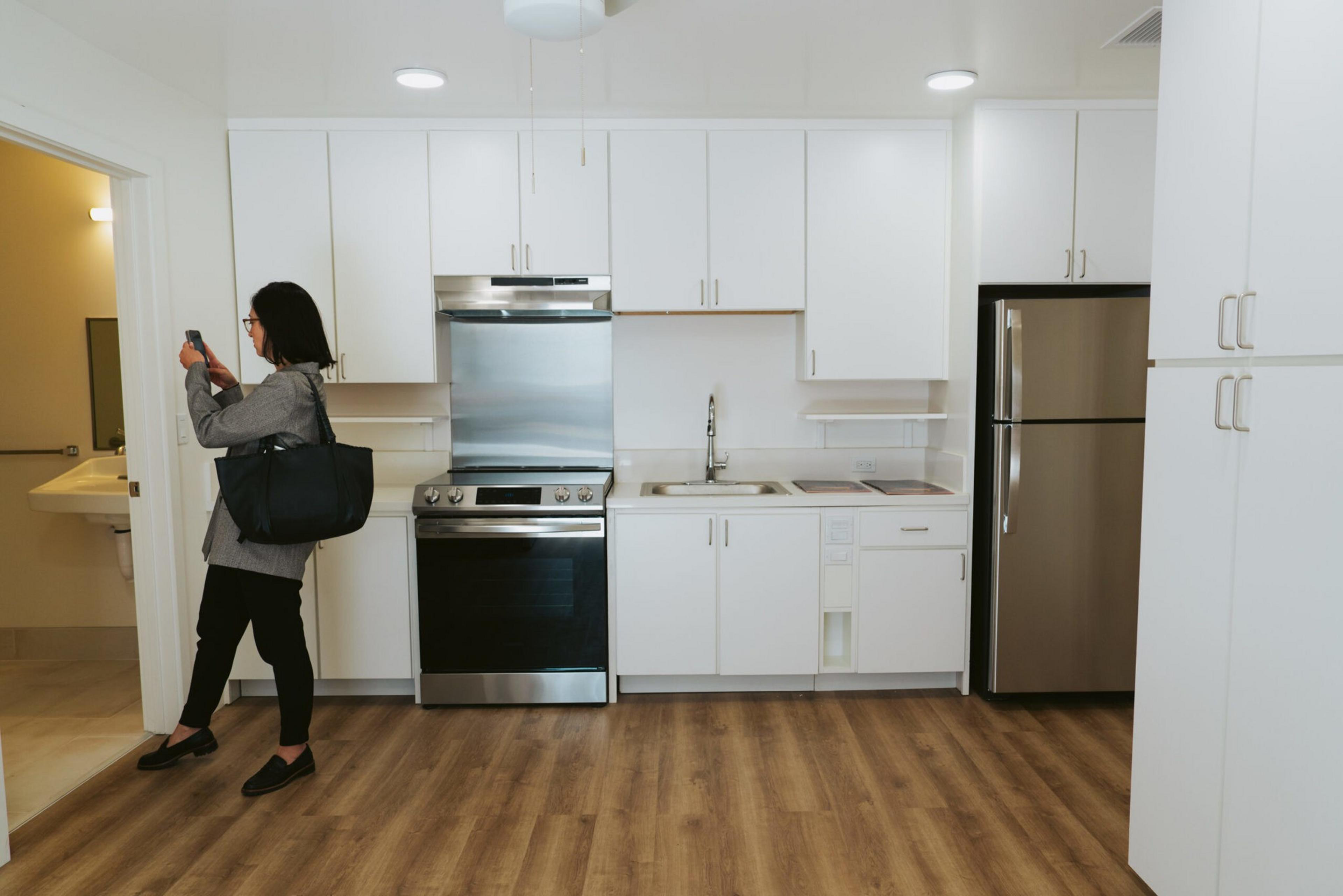San Francisco dignitaries planned to gather Tuesday to congratulate a San Francisco builder for converting a six-car garage into three livable accessory dwelling units (ADUs) in the city’s Mission District.
But while those on hand said new units at 3434 18th St. were proof of getting things done in a town known for red tape, others are pointing to the $650,000 per unit cost of the apartments as proof that San Francisco’s housing situation is as dysfunctional as ever.
According to architects and building professionals, that figure is higher than even the high-end spectrum for ADUs, which they said typically ranges from $200,000 to $350,000 per unit. One architect said their most expensive ADU project cost $500,000 per unit but noted it was a unique and challenging build.
READ MORE: Homes Under Sutro Tower: First Look at New Twin Peaks Housing Plan
“All in all, I’d say they are paying twice the private sector cost, and I would love to understand why,” said another Bay Area architect Ernie Selander.
In fairness, San Francisco is infamously known for exorbitant construction costs. Building costs for multifamily developments regularly breach $600 per square foot, according to consulting firm Rider Levett Bucknall (opens in new tab). Based on the size of the ADUs in the Mission though, their cost works out to about $1,600 per square foot.
“I’m not saying that isn’t a lot. And I’m also not trying to say that this is some scalable thing that’s going to solve the housing crisis,” said Sam Moss, the executive director of Mission Housing Development Corporation. “The units came in slightly lower than brand-new construction. Things cost what they cost.”

The process of building ADUs, also known as granny flats or in-law units, has been aided through a concerted effort by local and state policymakers. Case in point, the Mission Housing project at 18th Street specifically was enabled by a state law that streamlined approvals for ADUs in buildings that received structural retrofits.
The units will be placed on the city’s affordable housing portal, DAHLIA (Database of Affordable Housing Listings Information and Application), with two categorized as reasonable accommodations meant for tenants downsizing to accessible ground-floor units.
Moss said he disagreed with comparing the Mission Housing project to typical ADUs because of the accessibility for those with mobility issues. He also cited the development’s all-union contractor crew and the decision to earmark funds to replace building components for the next 35 years as cost drivers.
“Even if ours was the same and it cost more because we had fully prevailing wages, it would still be worth it,” Moss said, noting that Mission Housing used its private funds to build the project. “It can be done cheaper, but that doesn’t mean it should be.”
He specifically named ADU company Abodu as a contrast to what Mission Housing was trying to build. The Redwood City-based company offers prefabricated ADUs, which a representative says generally come in “well under $350K.”
A more apt comparison, according to Moss, is the cost for new construction like in the developer’s 1950 Mission St. project, which he said came out closer to $900,000 per unit. A 2018 tax credit allocation document (opens in new tab), however, estimated the per unit cost for that project at under $650,000.
“A lot of people who are converting garages are not turning it into a separate apartment, they’re just making another room with a kitchen and a bathroom,” Moss said.
Rebecca Möller said that doesn’t match her experience. Möller is the CEO and founder of Symbihom, a startup company that specializes in converting garage space into ADUs. Although Symbihom markets prefabricated kits for garage conversions, Möller also builds on-site ADU conversion projects.
“I’ve done everything from soup to nuts,” Möller said. “Frankly, if you’re converting your garage, it shouldn’t have to cost $650,000. Even with redoing the structure, I don’t see where the money would go.”
Möller said accessibility constraints and union labor would add to the cost but not to the level laid out by Moss. Ultimately, Möller said that she believes ADUs could be a big part of addressing the state’s housing shortage, but designers and developers have to keep costs in mind.
“They paid too much, and now they’re celebrating that they got something done,” Möller said. “This is an example of what could be done to immediately build housing in a community, but it can be done at a much more economical rate, quickly.”
